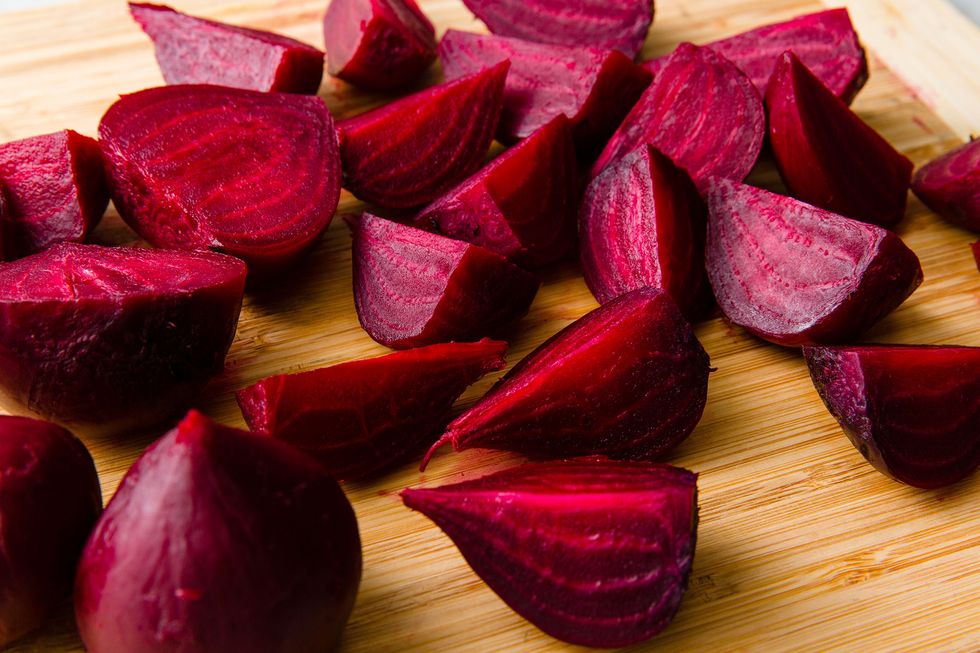The menu at Lennie’s in Bloomington, Indiana includes a Wild Beet Spinach Salad with strawberries, beets, sugar-roasted pecans, red onions, tomato, and Caprini goat cheese.
Making the topic of “beets” a handy post-it note, we’ll first survey the background of Lennie’s.
In the very beginning, 40 years ago, business partners Jeff Mease and Lennie Busch launched Pizza Express (later shortened to Pizza X), which is going strong today with five locations in Bloomington. Then Mease and Busch formed One World Enterprises, and in 1989 opened Lennie’s, a full-service restaurant featuring gourmet pizza. It became an icon of Indiana University campus culture.
Louisville beer nuts know what happened next: Bloomington Brewing Company, established in 1994 during the infancy of Hoosier “microbrewing,” and attached to Lennie’s, which henceforth functioned as a “brewpub.” Later the brewery expanded to a production facility elsewhere. In 2019 Lennie’s made a lease-related move from 10th Street to 514 E. Kirkwood and ceased brewing on site; in early 2022 the brewing facility itself was sold.
But One World Enterprises abides and thrives, albeit in slightly modified form. The beers are still brewed by its new owners, and beet salad remains on the menu at Lennie’s.
All of this came to my mind because last week on social media, Jeff Mease posted an ode to the beet, as written by Tom Robbins as the amuse-bouche to his novel Jitterbug Perfume. You’ve probably seen it before, but here’s the complete passage.
Daily Special
The beet is the most intense of vegetables. The radish, admittedly, is more feverish, but the fire of the radish is a cold fire, the fire of discontent not of passion. Tomatoes are lusty enough, yet there runs through tomatoes an undercurrent of frivolity. Beets are deadly serious.
Slavic peoples get their physical characteristics from potatoes, their smoldering inquietude from radishes, their seriousness from beets.
The beet is the melancholy vegetable, the one most willing to suffer. You can’t squeeze blood out of a turnip . . .
The beet is the murderer returned to the scene of the crime. The beet is what happens when the cherry finishes with the carrot. The beet is the ancient ancestor of the autumn moon, bearded, buried, all but fossilized; the dark green sails of the grounded moon-boat stitched with veins of primordial plasma; the kite string that once connected the moon to the Earth now a muddy whisker drilling desperately for rubies.
The beet was Rasputin’s favorite vegetable. You could see it in his eyes.
In Europe there is grown widely a large beet they call the mangel-wurzel. Perhaps it is mangel-wurzel that we see in Rasputin. Certainly there is mangel-wurzel in the music of Wagner, although it is another composer whose name begins, B-e-e-t—.
Of course, there are white beets, beets that ooze sugar water instead of blood, but it is the red beet with which we are concerned; the variety that blushes and swells like a hemorrhoid, a hemorrhoid for which there is no cure. (Actually, there is one remedy: commission a potter to make you a ceramic asshole—and when you aren’t sitting on it, you can use it as a bowl for borscht.)
An old Ukranian proverb warns, “A tale that begins with a beet will end with the devil.”
That is a risk we have to take.
That’s what I call writing.
We won’t belabor the point about the elemental awesomeness of beets. Writing at Columbia Metropolitan (South Carolina), Charles Ellison avers: The Beet Must Go On, whether raw, pickled, roasted, or stewed.
Tom Robbins is not kidding when he says the beet is an intense vegetable. Diners tend to either love or hate beets’ sweet, earthy flavor, making it one of those foods with deep divides. There is a good reason for that: a natural bacterial product beets contain called geosmin is the substance responsible for the smell of a freshly plowed field or the earth after a nice rain. Humans are highly sensitive to geosmin, which explains why opinions about it are strong. Those who partake reap the benefits. Beets and their greens are a great source of fiber and are rich in riboflavin, iron, and vitamins A, C, and K.
We close with a musical selection.
Cover photo credit: Parker Feierbach at Delish





















